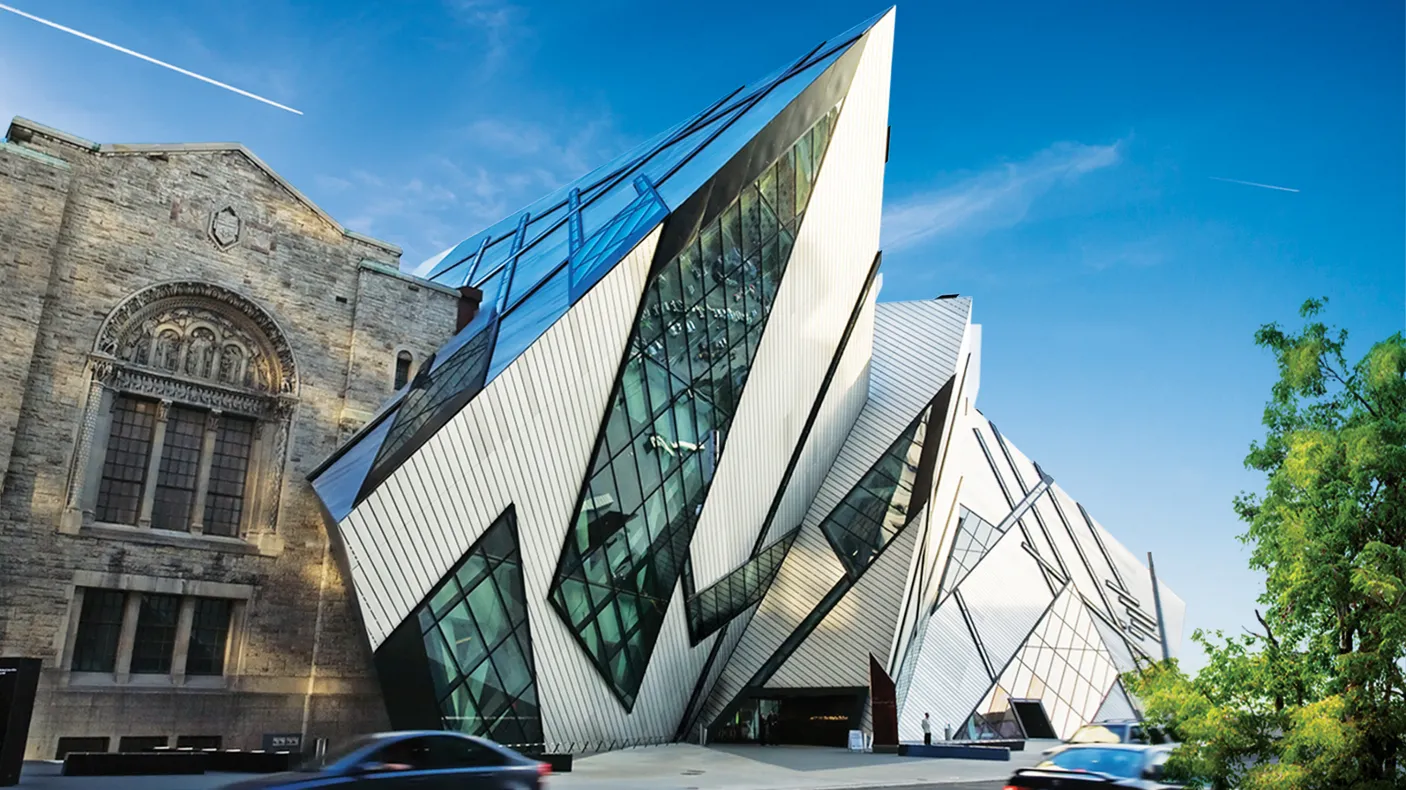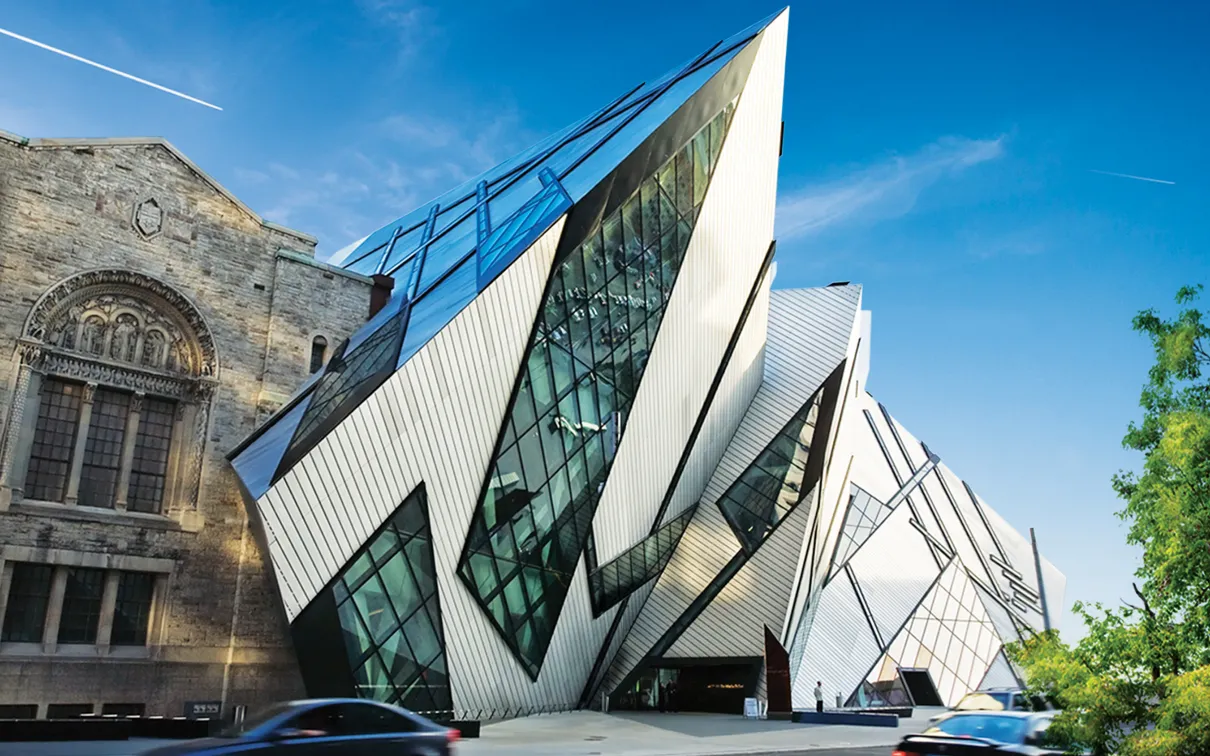Glass Worlds: Paperweights from the ROM’s Collection
Published
Category
Press Release
The Royal Ontario Museum (ROM) invites everyone to come and enjoy the intricately beautiful exhibition, Glass Worlds: Paperweights from the ROM’s Collection. Considered one of the best public collections in North America, over 250 of the finest examples of 19th and 20th century glass paperweights will be on display in this original ROM exhibition from April 28 to November 25, 2007 in the Samuel European Galleries’ exhibition space.
Glass Worlds is the first major exhibition of its kind in Canada and compliments the Architectural Opening and Building Dedication of the Michael Lee-Chin Crystal on Saturday, June 2, 2007. Visitors will have the opportunity to enjoy the crystalline forms of the Lee-Chin Crystal then venture into the Museum to experience the colourful glass worlds found in the ROM’s paperweight collections, many on display for the first time.
“The Museum's collection of glass paperweights is one of the most important collections of its type anywhere in the world. Glass Worlds will highlight the ROM’s magnificent collection while showcasing the artform’s complexities,” says Brian Musselwhite, Assistant Curator and Curator of Glass in the ROM’s World Cultures Department, European Collection. “Visitors will enjoy this entertaining and visually appealing exhibition, which also includes technology founded in Ancient Phoenicia, the Islamic world, and Ancient Rome. Adults and children in particular will find the candy-coloured paperweights visually fascinating and the tiny animals, reptiles and insects adorable.”
Displayed in 16 cases and divided into three thematic sections, Glass Worlds features paperweights from glasshouses in France like Baccarat and Saint-Louis, Bacchus in England, Italy’s Murano and Venini, as well as others from Scotland, Sweden, Central Europe and China. Butterfly Hovering over a Flower was a specialty of the paperweight makers of Baccarat (about 1848-55), allowing the pleasures of a summer garden to be enjoyed even in the dead of winter. North American glass companies, like Mt. Washington as well as Boston and Sandwich from the United States, and Canada’s Dominion, will also be on display. The Mt. Washington Rose for example is one of the most naturalistic and largest floral weights produced in the United States in the late 19th century.
Also represented are many contemporary paperweight makers including Canadians John Gooderham, and Toan Klein, as well as Virginia Wilson Toccalino and Tony Toccalino. The Toccalinos’ work with glass canes continues a long tradition that first began in the ancient world. Canes are rods of glass with colour, either a single colour, or many strands of multiple colours in pattern. Virginia’s Mutant Brain is a vibrant example of her skilled cane work and the beauty of this technique.
Americans Rick Ayotte, Paul J. Stankard and Victor Trabucco have created extremely interesting paperweights over their careers. Stankard is one of the leading paperweight makers in the United States today. Specializing in sculptural weights, a marble collector challenged him to create a big “marble”, which became the inspiration for Honeybee Hive Bouquet, a large spherical weight with no bottom. Trabucco's incredibly realistic Salamander is symbolic of the exhibition as a whole. The salamander was thought to live in fire and therefore became the symbol of the glass workers.
Section One will introduce visitors to the world of paperweights. An Introduction case will describe what is and what is not a paperweight, with broken examples used to illustrate that they are indeed made of glass. The various components needed to create paperweights from glass rods and canes will be on display, as well as desk and dining room ornaments ranging from seals, vases, and knife rests. Topics on materials and elements used in making paperweights (all glass, with the exception being sulphides -- porcelain with a high glass content), their various sizes (miniature, common, and magnum), and the differentiations between countries and factories will help visitors understand paperweight complexities. A brief history of glassmaking and historical precursors to paperweights will feature glass from the Ancient Islamic world, small bowls made in Ancient Rome, and 20th century examples like the Italian handkerchief vase of 1949. Another case in this section is dedicated to flame work, glassworking using a torch to melt and shape the glass. Examples range from an Ancient Phoenician head to a beautiful perfume bottle by Canadian artist Alexander Kapran.
Shifting back and forth from Europe to North America, the second section concentrates on five main paperweight groupings, charting a general chronological progression while presenting the various factories and design types. Topics include classic early paperweights (French, 1845-1855), early North American (1855-1900), British (1850s-1950), European (1950-present) and recent North American (1950-present) examples. There will be substantial Canadian content in this section, and works by active Canadian and U.S. paperweight designers/makers.
The exhibition concludes with additional topics of general interest, including a short video of paperweight making and a demonstration by Paul J. Stankard. A large glass cane lamp and a large flamework glass tree highlight this artistry. A case for new paperweights purchased through the J.A. Howson Brocklebank Fund will be added throughout the exhibition’s run as well. This section will also highlight Stankard’s paperweights and those of other artists. Visitors can test their skills and try to identify the animals, birds, bugs and flowers as well as the artists who created the paperweights on the Guess What? shelf. Included is also an overview panel of famous paperweight collections from Empress Eugenie of France, King Farouk of Egypt, and the French writer Colette.
Throughout the 19th century, most paperweights were appreciated for their decorative aspects but were the least valued objects made by the glasshouses, and were not considered as artistically important as they are today. Despite being inexpensive to make, the technology and patterns created beautifully complex objects d’art.
The ROM’s collection was formed by the generosity of two donors, Mrs. Alice B. Hall who collected French weights of the 1840s and 1850s, and Mr. J.A. Howson Brocklebank who collected contemporary weights. In addition, the Brocklebank Fund allows the Museum to regularly add significant weights as well as sponsor the Annual Brocklebank Paperweight Lecture in early May (see below for more details).
Other Information:
An illustrated exhibition catalogue, Glass Worlds: Paperweights from the ROM’s Collection, published by the Royal Ontario Museum, and will be available in the ROM Museum Store ($14.99 soft cover), written by the exhibition’s curator, Brian Musselwhite.
Admission to Glass Worlds: Paperweights from the ROM’s Collection is included with paid general admission -- Adults: $18; Students with ID and Seniors: $15; Children: $10; Children 4 & under are free -- and includes the ROM’s permanent galleries and special exhibitions.
Glass Worlds: Paperweights from the ROM’s Collection will open in time for the 17th Annual Decorative Arts Symposium: Crystal & Glass, Glorious Grains of Sand (May 3 – 5, 2007). Learn more about the ROM's world-class collection of glass, how glass evolved, and the role it has played in our lives. Speakers: Brian Musselwhite, Department of World Cultures, Royal Ontario Museum, Toronto; Dr. Janet Duncan Jones, Department of Classics, Bucknell University, Pennsylvania; Dr. Jutta-Annette Page, Curator of Glass, Toledo Museum of Art, Ohio; Jane Shadel Spillman, The Corning Museum of Glass, New York; Dr. Petr Novy, Museum of Glass and Costume Jewellery, Czech Republic; Peter Cormack, Keeper, William Morris Gallery, London; John Smith, glass scholar, formerly of Mallett and Son (Antiques), London; Charles Hajdmach, leading expert on 19th century British glass and former director of Broadfield House Glass Museum, Stourbridge; and Peter Layton, founder of London Glassblowing, London. The annual Decorative Arts Symposium is organized by the ROM’s Department of World Cultures and the Department of Museum Volunteers with proceeds benefiting the Royal Ontario Museum. The event is sponsored by Wedgwood, with additional support from Christie's. The hotel host is Holiday Inn Midtown. To register and obtain more information contact Elsa McKay at 905.278.1291 or elsamckay@rogers.com. Pre-registration is required. Early Bird (until March 31) $275 $350/ROM members $300. Cost includes cocktail reception, lectures, lunches and morning coffee.
On Sunday, May 6, 2007 from 10:30 a.m. to 12 p.m, experience an intimate hands-on seminar, the Paperweight Connoisseur’s Morning. Join the ROM’s Glass Curator and paperweight specialist, Brian Musselwhite, and Canadian paperweight artists Virginia Wilson Toccalino and Tony Toccalino as they explain and discuss some of the Museum's most interesting antique and contemporary weights. Limited to 15 participants. ROM Members: $50 (online $45), General Public: $60 (online $55). Register online at www.rom.on.ca/programs, click ROMLife lectures, keyword Paperweight, or call 416-586-5797.
Presented by the ROM, the 7th Annual Brocklebank Paperweight Lecture will be held on Sunday, May 6, 2007 at 2 p.m. Leading contemporary Canadian paperweight artists Virginia Wilson Toccalino and Tony Toccalino focus on pushing the ancient Venetian style into the future. Enjoy their personal insights into the design and creation of these works of art. And be the first to see the latest additions to the ROM’s paperweight collection acquired from these Canadian two artists. For more information please call 416.586.5797, email programs@rom.on.ca, or visit the ROM’s website. ROM Members: $18 (online $16), General Public: $22 (online $20). Register online at www.rom.on.ca/programs, click ROMLife lectures, keyword Paperweight, or call 416-586-5797.


